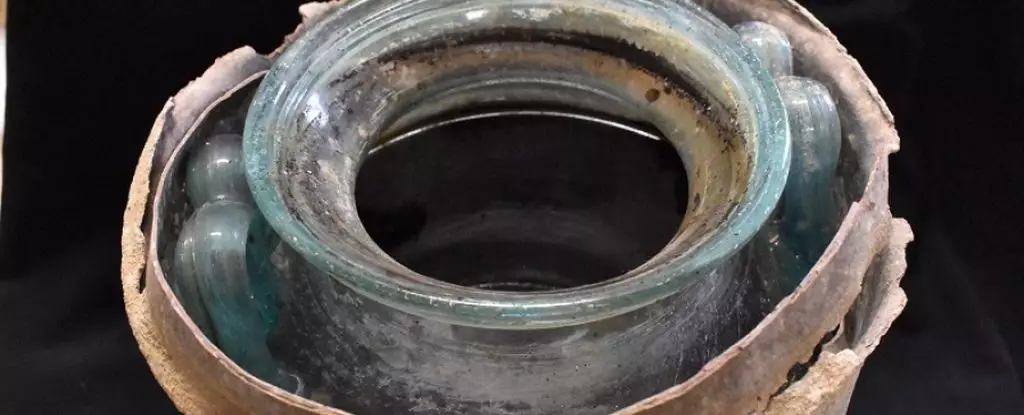In the ancient Roman necropolis of Carmo in present-day Spain, archaeologists made a surprising discovery that has left them astonished. A sealed jar of wine, dating back approximately 2,000 years, was unearthed along with the remains of a Roman man. The wine, once a sweet white, has now turned a reddish color and contains human dust. Despite the macabre addition to the liquid, this vintage now holds the title of the oldest known wine, surpassing the 4th century CE Speyer wine bottle by centuries.
The mausoleum where the jar of wine was discovered is believed to belong to a specific family, making it a rare find in the world of archaeology. Often, ancient tombs are looted over time, leaving little behind for historians to study. In this case, the chamber was found sealed, preserving its contents against the ravages of time and grave robbers. Among the luxurious grave goods found were patchouli perfume, jewels, fabrics, glass objects, and a large lead container. The sealed glass urn containing the wine half-filled with liquid was a unique feature of this tomb.
To determine the composition of the liquid found in the sealed jar, chemists conducted a series of comprehensive analyses. They measured the pH, organic matter, mineral salts, and polyphenols present in the liquid. The team used advanced techniques such as inductively coupled plasma mass spectrometry and high-performance liquid chromatography-mass spectrometry to identify the chemical elements and compounds present. The results showed that the liquid was indeed wine, with similarities to the wine regions of Montilla-Moriles, Jerez, and Sanlúcar.
Pouring wine onto the cremated remains of a loved one was a common funerary practice in ancient Roman times. However, there is a possibility that the wine seeped into the urn accidentally. The sealed nature of the mausoleum could have led to other ways liquid entered, such as flooding or leaks. Despite the red color of the liquid, chemical analysis revealed that the original wine was a white varietal. The absence of syringic acid, typically found in red wine, supported this conclusion.
The Roman man laid to rest in the urn of wine was accompanied by five other individuals in the same chamber. Another glass urn in the tomb contained the cremains of a woman named Hispana, along with her belongings. The Roman man’s jar held a gold ring with a carving of Janus, the Roman god symbolizing time and transitions. The cultural significance of these burial practices shed light on the beliefs and customs of the ancient Romans, showcasing a unique way of honoring the deceased.
Overall, the discovery of the world’s oldest wine and the intriguing burial practices of the ancient Romans provide valuable insight into the past. Through meticulous scientific analysis and archaeological excavation, we can piece together the stories of those who came before us, uncovering a rich tapestry of history that continues to fascinate and educate us today.


Leave a Reply